May 25, 2025 | 21:56 GMT +7
May 25, 2025 | 21:56 GMT +7
Hotline: 0913.378.918
May 25, 2025 | 21:56 GMT +7
Hotline: 0913.378.918
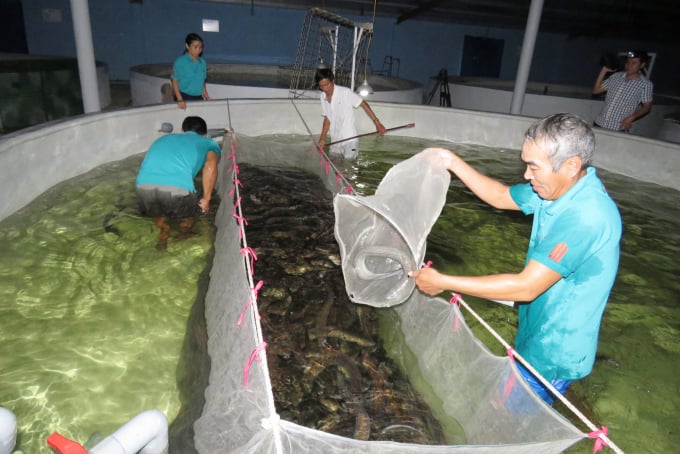
A commercial eel tank of Kim Long Vietnam Service Trading Co., Ltd. Photo: TP.
Le Ha Giang quit his job as an officer of Quang Binh Petroleum Company to engage in growing eels (Anguillidae). At first, he studied and practiced raising this fish through documents and books.
Wherever going on business, his wife, Truong Thi Thuy Thanh also tried to find books about the Anguillaformes for her husband. “There were very few documents then. Some books only say that raising this fish, you must create holes for them to live in,” recalled Giang.
From the very beginning days to nearly 10 years, Giang has learned many experiences of raising eels in stone ponds, progressing to raising them in cement tanks and then in canvas-lined ponds. In a crop at the end of 2016, Giang estimated a large revenue but a heavy rain with flash floods had washed away more than 10 tons of fish which had reached harvest time. More than VND3 billion had also “drifted” away with floods in just one night. Giang and his wife were empty-handed so had to return to the starting point.
Not giving up their passion, in early 2017, Giang and his wife went to Nha Trang to learn more about raising this species of eel. The teacher, who was implementing a high-tech eel farming project, Hoang Van Duat, gave him more will to overcome difficulties and supported him with new farming technology. The couple returned to Quang Binh to establish Kim Long Vietnam Trading Service Co., Ltd. and chose the coastal sand dunes in Le Thuy district to build a high-tech eel farm.

Giang checks the size of the eels. Photo: T.P.
Instead of digging a lake, new farming technology is applied with the building of cement tanks on the ground. The farming area is covered with a roof to prevent heat and light.
According to Giang, the difference is that the tanks are protected in the dark to minimize noise and light. With such a way of raising, the fish won't be much disturbed and won't stop eating. On the day we arrived at his farm, Giang was directing everyone to gather the fish. A large 1-ton fish tank is covered by a gill net able for all the fish to get in it. Fish are classified as large, medium, and small to adjust their feeds.
"After 5 years of implementing eel farming under a high-tech model, the main feed is from clean industrial processing sources. Using omnivorous food will heavily affect the water source and make it difficult to control bacteria which can be harmful to the fish and thus it is also very hard to control epidemics. If the fish is infected, antibiotics or other drugs must be used and this will much affect the quality of commercial fish," Giang explained.
Not only providing commercial fish to the market, but the company also supplies fingerlings for the market. The farm has 6 lakes with each having a capacity of 30m3 of water to be used for nursery and breeding fingerlings. According to Giang, each year, nearly 40,000 fingerlings are produced. Giang's eels are also sold in the market in provinces of Quang Tri, Ha Tinh, and Hai Phong City.
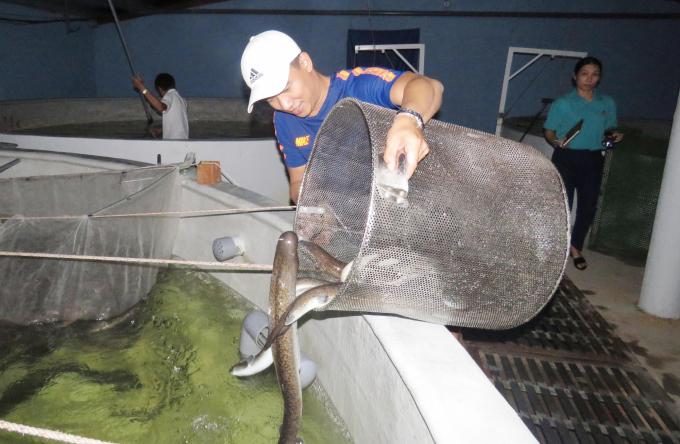
An eel tank is ready for harvest as the fish weigh enough for sale. Photo: T.P.
Besides exporting and selling commercial eels, the company opens more businesses for pre-processed eel products. Customers only buy a box of fish, cook, and enjoy it. Such eel products are rich in types including braised eel, grilled eel, and hot pot eel.
In the last two years, as the Covid-19 pandemic fiercely affected the production and consumption of eel, Giang quickly changed to raise more species such as snakeheads and frogs. In 2021 alone, the company grossed a revenue of about VND6 billion.
At the beginning of this year, Giang connected with a business enterprise to export a species of eel (Anguilla bicolor). This is a good sign after the pandemic. Talking about his future plan, Giang said he has invested nearly VND2 billion in upgrading the lakes and equipment applying new technology to increase production scale. He will also invest in raising snakehead fish and frogs. He will continue to export Anguilla bicolor to markets such as Korea and Japan at the same time maintain the supply of giant mottled for domestic consumption.
Translated by Linh Nguyen
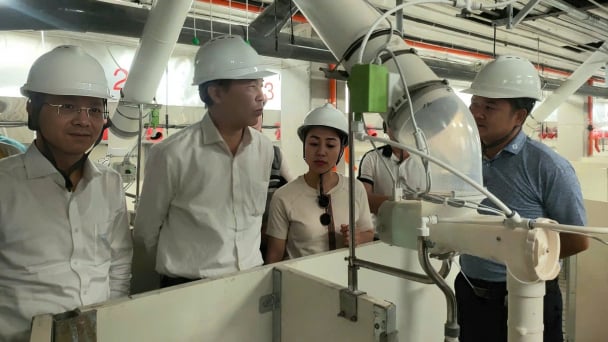
(VAN) Despite investment costs being 1.5 to 1.8 times higher than conventional methods, multi-story pig farming demonstrates outstanding effectiveness, increasing land-use efficiency by 4 to 10 times.
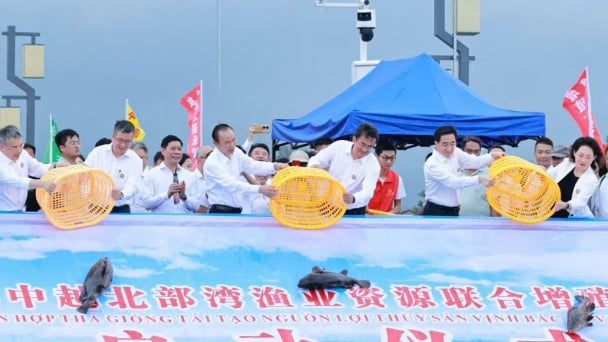
(VAN) Deputy Minister of Agriculture and Environment Phung Duc Tien leads a working delegation to participate in several key activities in China aimed at promoting agricultural and fisheries cooperation.
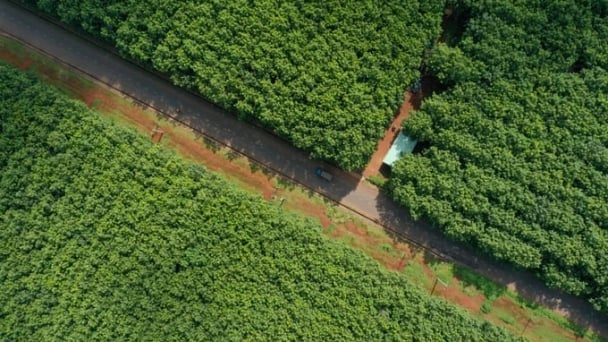
(VAN) The European Commission has just released a list of ‘low-risk’ countries for deforestation, which includes Vietnam.
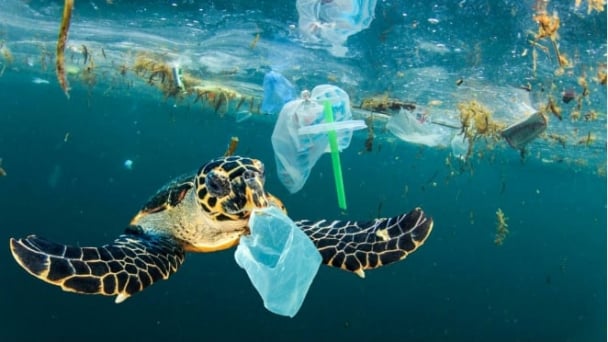
(VAN) The convenience of single-use plastics is leaving lasting consequences for the oceans.
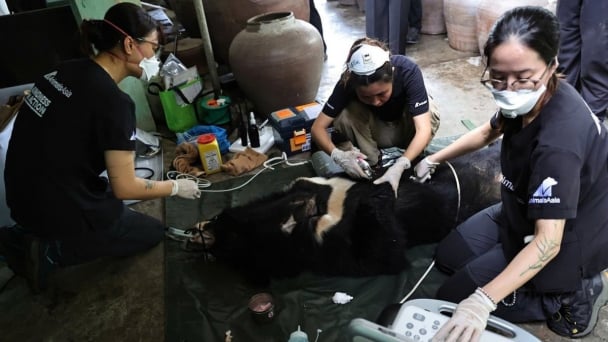
(VAN) On the morning of May 23, in Nghe An, the Animals Asia Foundation successfully rescued a Tibetan bear and transferred it to the Vietnam Bear Rescue Centre located in Bach Ma National Park.
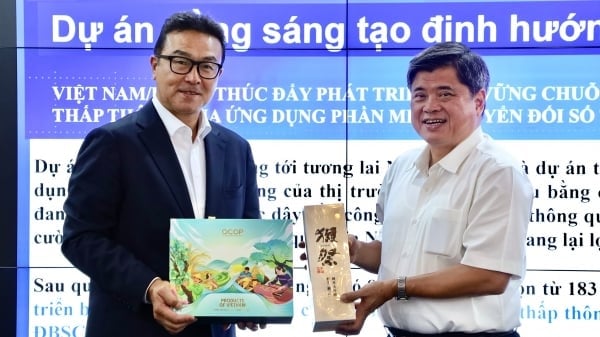
(VAN) On May 23, Deputy Minister of Agriculture and Environment Tran Thanh Nam held a working session with a Japanese delegation on the application of digital technology in agricultural production.
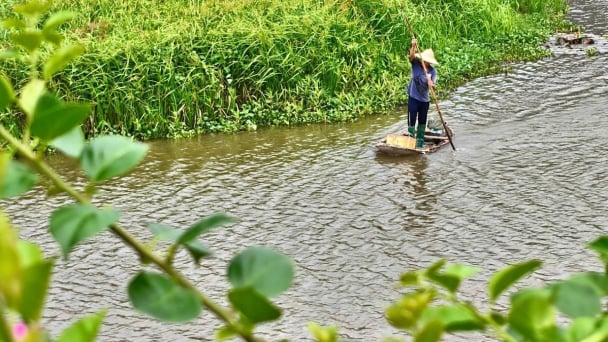
(VAN) In the tranquil wetlands of Van Long, there are quiet souls who guard the forests, nurture the waters, and oversee every bird and troop of langurs as protecting the essence of a living heritage.